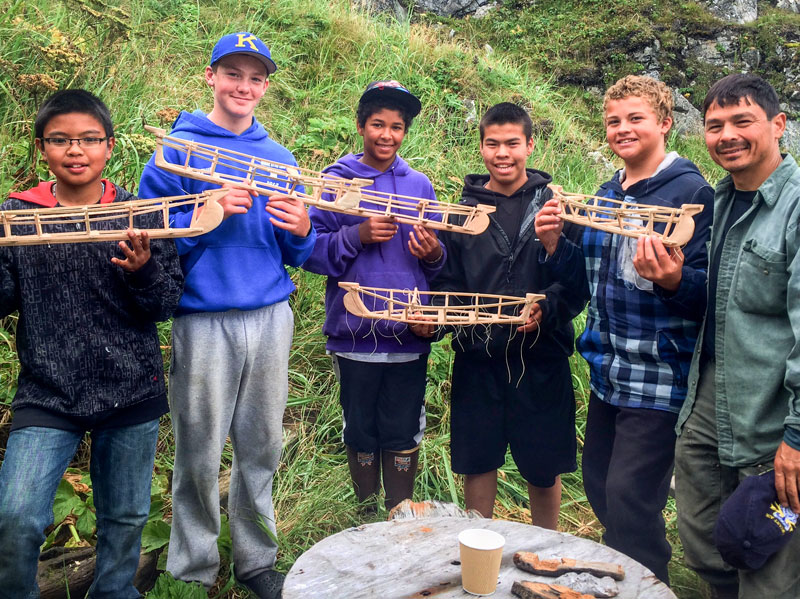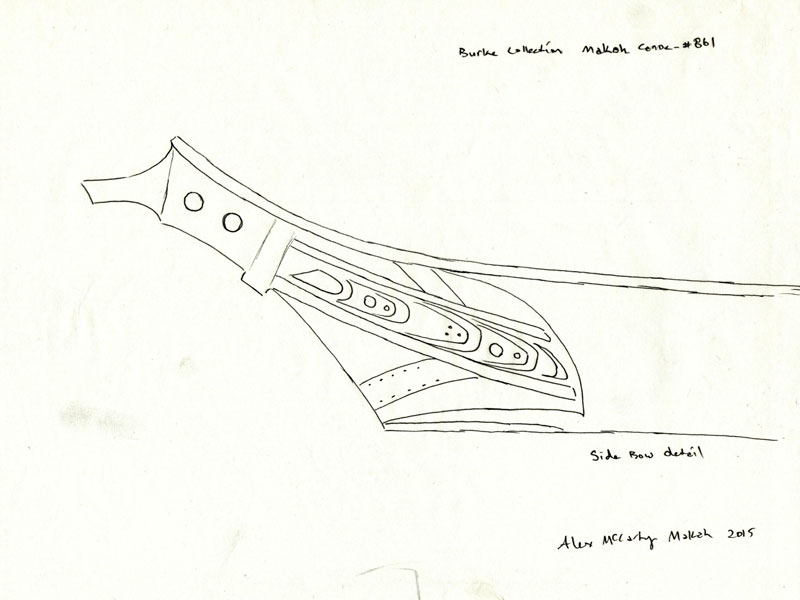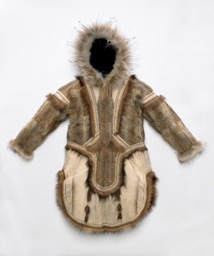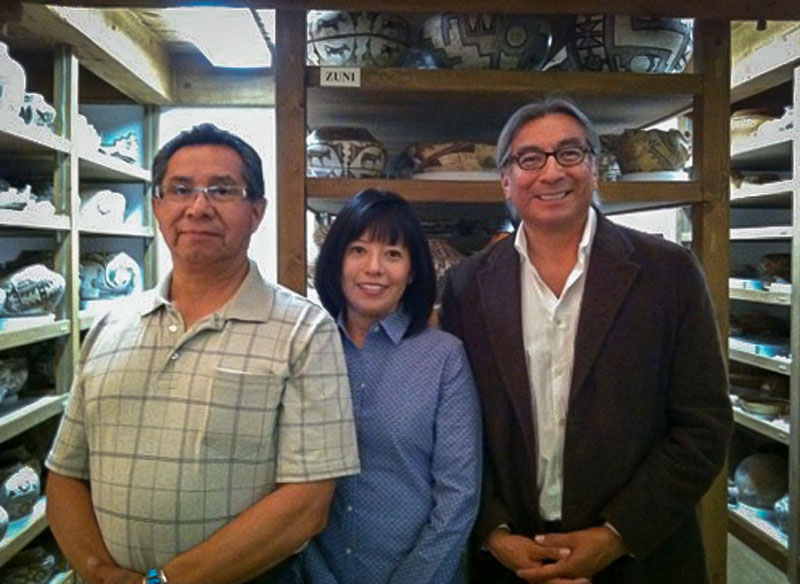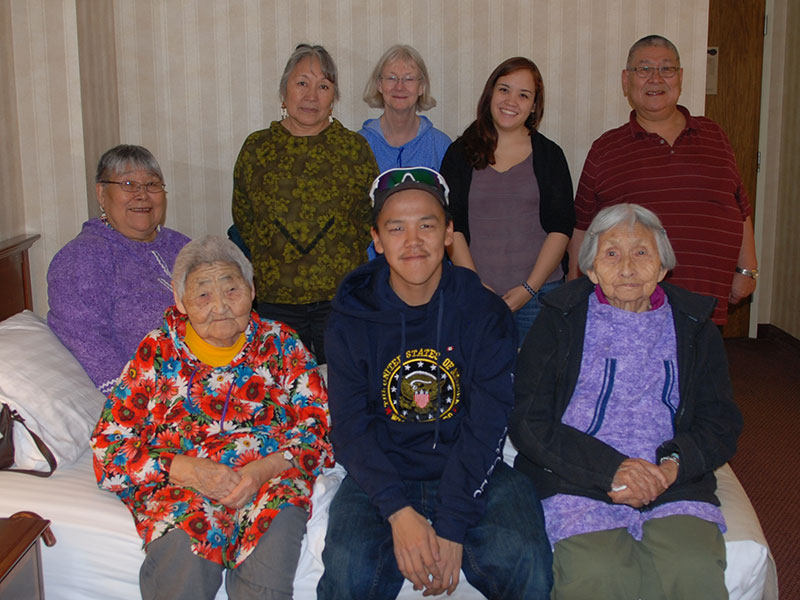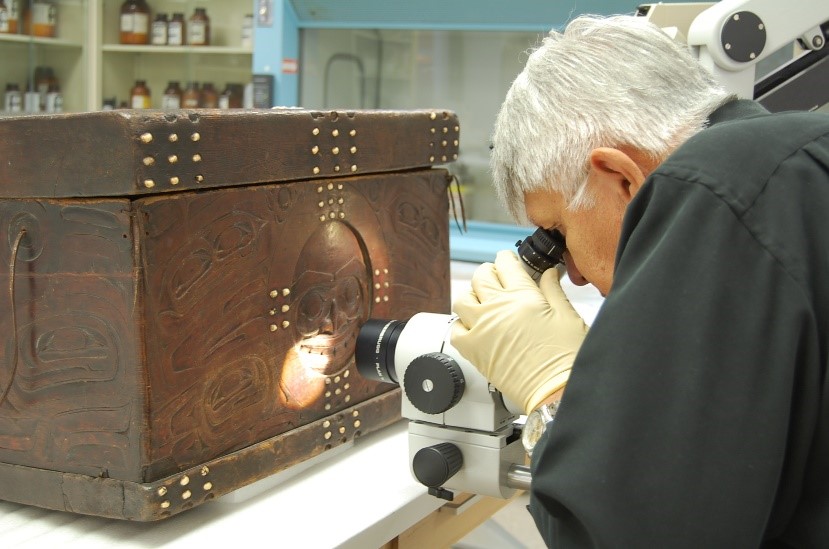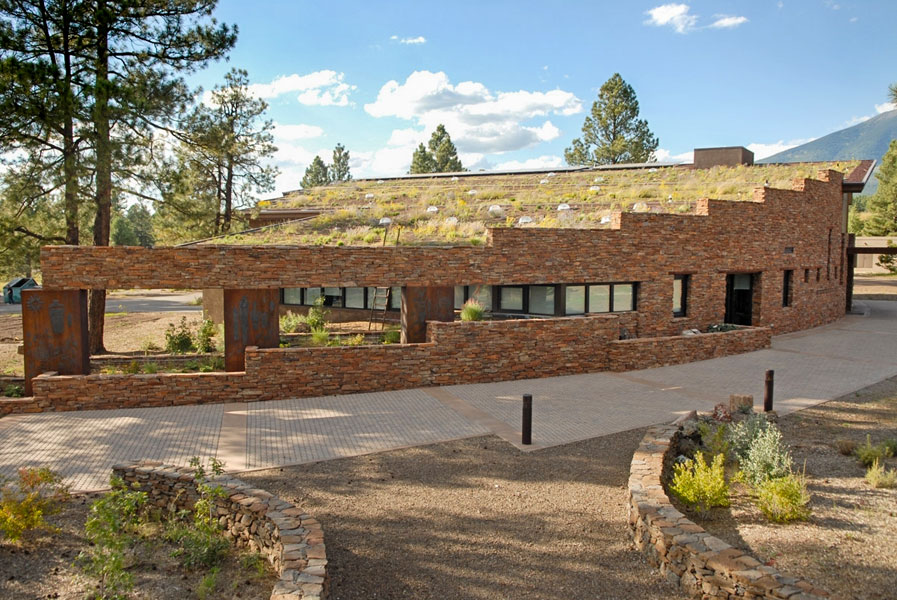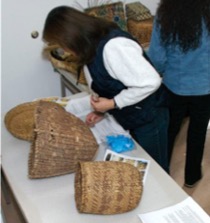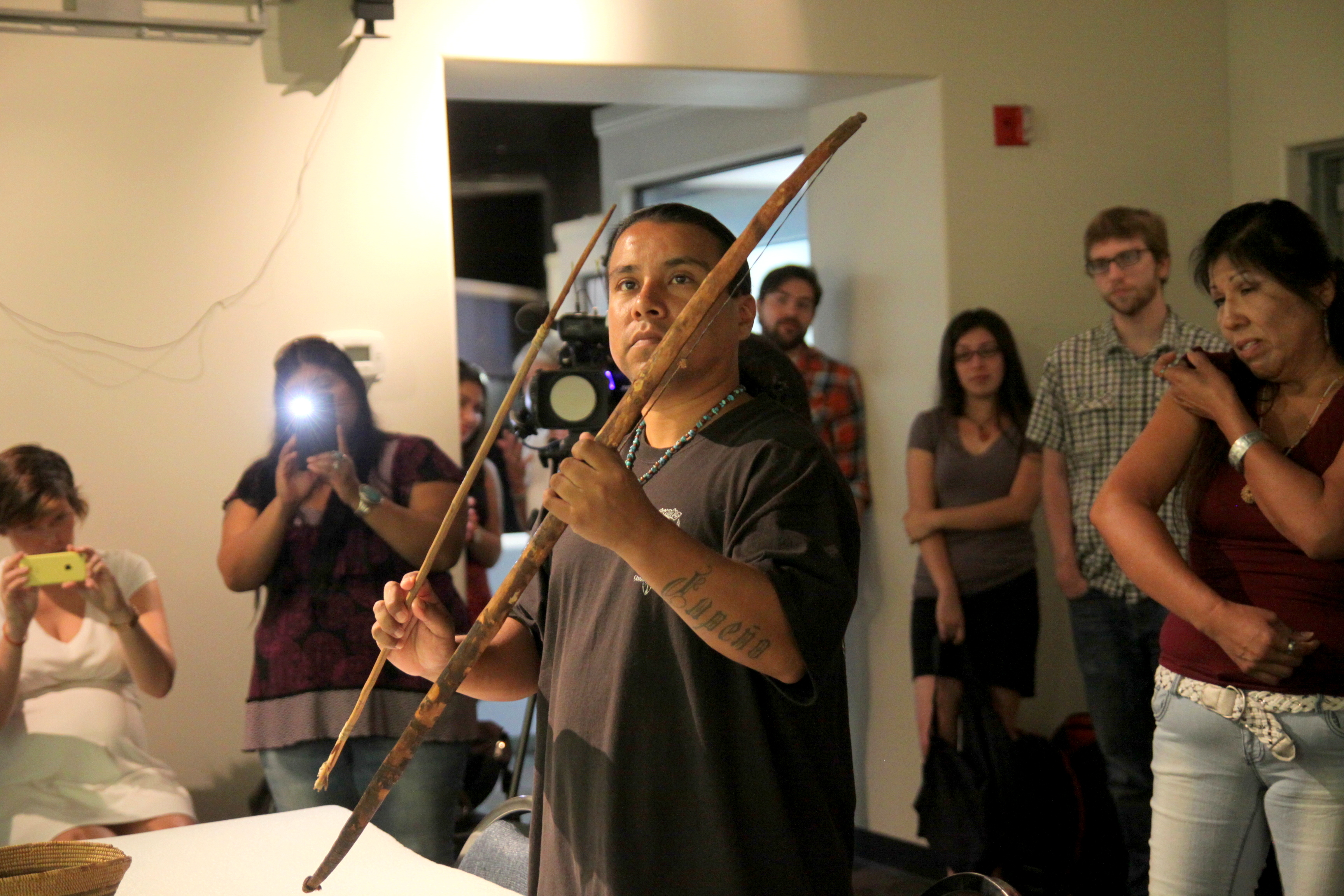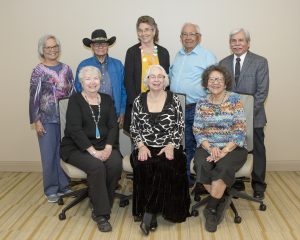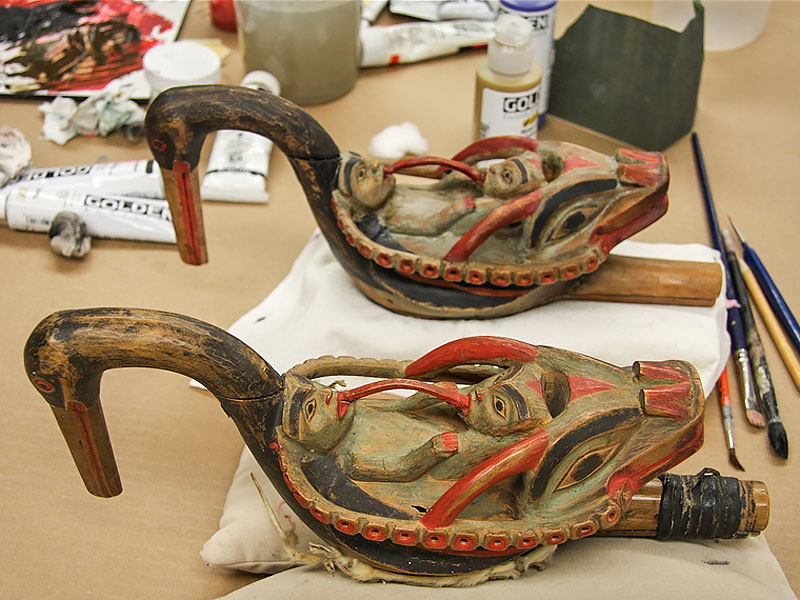Case Studies
Cultural Revitalization
Bringing Museum Research Home
Sven Haakanson, Burke Museum of Natural History and Culture, U of Washington, Seattle
When we are talking about cultural revitalization it is important to keep in mind we are working with losses and tragedies that continue to impact our communities health.
Read more >
Artistic Inspiration and Arts Revitalization
Artistic Inspiration in Model Canoes
Janine Ledford, Makah Cultural and Research Center
Alex McCarty, Makah Artist and instructor
We are very fortunate that we have access to preserved objects such as these model canoes because it helps us understand where we come from and how important the ocean is to our cultural health and well-being.
Read more >
Artistic Inspiration and Ongoing Relationships
Landis Smith, National Museum of Natural History
One of the goals of this project was to form long-term partnerships between the museum and community members, in contrast to short consultations. Such partnerships depend on trust and mutual respect, and encourage sharing, creativity and exchange of ideas and expertise.
Read more >
Improving Museum Information
Record Keeping for a Long-Term Collaborative Project
Jennifer Day, School for Advanced Research
Since 2015, staff at the Indian Arts Research Center (IARC) at the School for Advanced Research (SAR) have been working with representatives from Acoma Pueblo to comprehensively review each object in nproject are to improve the records for each piece by adding new information (as approved by the community representatives), correcting inaccuracies, and sharing the newly improved records with Acoma Pueblo’s Haak’u Museum so community members can have access to them.
Read more >
Setting the Record Straight
Cynthia Chavez Lamar and Jim Enote
School for Advanced Research and A:shiwi A:wan Museum and Heritage Center
The intention of these collection reviews was to correct misinformation and provide relevant contextual information about Zuni items in SAR’s collection as well as provide instructions on care and handling practices.
Read more >
Community Experts
“Pinerrluirturluki Kesianek/Always Preparing Our Men for Success”
Yup’ik elders visit to the National Museum of the American Indian, October 27-November 4, 2012
Ann Fienup-Riordan, Independant Scholar
During the last week of October 2012, three Yup’ik seamstresses – Albertina Dull (age 94), Elsie Tommy (age 90), and Martina John (age 74) traveled with Ruth Jimmie, Calista Elders Council (CEC) director Mark John, University of Alaska Fairbanks student Abby Moses, and anthropologist Ann Fienup-Riordan to Washington, DC to work in collections at both the NMAI and NMNH.
Read more >
Correcting the Record Through Collaborative Examination
Michele Austin Dennehy, George Bennet, Sr., and Landis Smith
Tlingit artist, Tlingit artist, and National Museum of Natural History
George Bennett Sr. (T’ak Dein Taan) and his son James Bennett (Wooshkeetaan), both Tlingit artists, visited the Anthropology Conservation Laboratory at the National Museum of Natural History while they were at the Smithsonian as part of the Native American Community Scholars program of the Office of Fellowships. With the Anchorage Project conservators and interns, the Bennets reviewed a group of Tlingit objects selected for exhibit.
Read more >
Culturally Appropriate Care
Building a new Collections Center: Native Collaboration with the Museum of Northern Arizona
Robert G. Breunig, President Emeritus, Museum of Northern Arizona
The team discussed the principles that should be exemplified in the building. There was agreement on the following concepts: the entrance should face east, there should be some circularity of form, the building should be in tune with the cycle of the seasons, there should be a visual connection to the San Francisco Peaks, the building should have some natural light, the building should feel “as if it belongs here”, the building should be sustainable and the building should be “alive”.
Read more >
Collaborative Conservation
NMAI Long-Term Collaborating with Tlingit Weaver Teri Rofkar
Marian Kaminitz, Caitlyn Mahony, and Kelly McHugh, National Museum of the American Indian
What began as an individual Native artist accessing, researching and learning from the Tlingit items in the NMAI (and other museum) collections, grew into larger collaborative experiences of sharing and exploring western and indigenous science together with conservators from the NMAI and other museums.
Read more >
Traditional Gutskin Repair
Kelly McHugh, National Museum of the American Indian
Needing to talk with someone more familiar with the properties of gutskin in order to come up with the best way to repair the tears, the conservator was given the name of artist Elaine Kingeekuk. who comes from a family of skin sewers and uses gutskin in her own work.
Read more >
Zuni Basket Project
Collaborative Conservation and Revitalization of Basketry in Community
Jim Enote and Nancy Odegaard
A:shiwi A:wan Museum and Heritage Center and Arizona State Museum
In 2010 the Arizona State Museum shared detailed images of the Zuni basketry objects from the collections and loan for use in a basketry weaving workshop held at the A:shiwi A:wan Museum and Heritage Center. Only two elder basketry weavers were known to have practical knowledge of traditional basket weaving.
Read more >
Loans for Museum Exhibits, Community-based Exhibits, Programming, and Cultural Use of Museum Collections
In-Community Program with Ramah Navajo Weavers Association
Landis Smith, Museums of New Mexico Conservation Unit
Cathy Notarnicola, Museum of Indian Arts and Culture
As part of the 2012 In-Community Program organized for the National Museum of the American Indian (NMAI) by Landis Smith, Cathy Notarnicola and Valerie Verzuh from the Museum of Indian Arts and Culture (MIAC) in Santa Fe, traveled to the Ramah Navajo Weavers Association in Pine Hill, New Mexico. They carried with them several nineteenth- and twentieth-century Navajo textiles from MIAC’s collection.
Read more >
Cahuilla Continuum
Sean Milanovich, Agua Caliente Band of Cahuilla Indians
Brenda Buller Focht, Ph. D., Museum Curator, Riverside Metropolitan Museum
A RMM goal of this project was to bring the Cahuilla heritage back to the Cahuilla people through a loan from NMAI. In conversations with NMAI staff three Cahuilla objects with known makers were selected. A loan of these objects was approved.
Read more >
Providing Guidance on Exhibit Development and Planning
Chickasaw Nation Council of Elders Approval of Creating Replicas of Artifacts
Valorie Walters, Chickasaw Cultural Center
In 2015, the Department of Culture and Humanities requested advice and guidance from the Council of Elders on the topics of 1) replicating culturally sensitive items, which were to be placed in our collection and 2) for culturally appropriate items that could go on display in public exhibits. The group meets monthly and is asked to provide guidance to the Chicasaw Nation on important matters.
Read more >

Exhibit Preparation
- MIAC: Here, Now, Always
- NMAI: Opening Exhibits
Providing Input to Museum’s Public Programs, including Presentations and Planning
Collaborative Public Programming
Landis Smith, National Museum of Natural History
In conjunction with the 2010 opening of Yup’ik science exhibit, Dr. William Fitzhugh and Landis Smith implemented a project to review, with Yup’ik partners, Chuna McIntyre and Mark John (then president of the Calista Elders Association in Bethel, AK), collections at the Smithsonian National Museum of Natural History made by Edward Nelson in Yup’ik lands circa 1885.
Read more >
Using New Technologies
3D Replication: Emerging Technologies for Communities
Eric Hollinger, Smithsonian National Museum of Natural History Anthropology Dept.
Museums themselves sometimes made reproductions by casting with plaster and later with epoxies and resins. Now, advances in computing technology have allowed the creation of digital techniques for digitally documenting and reproducing objects in 3D.
Read more >

